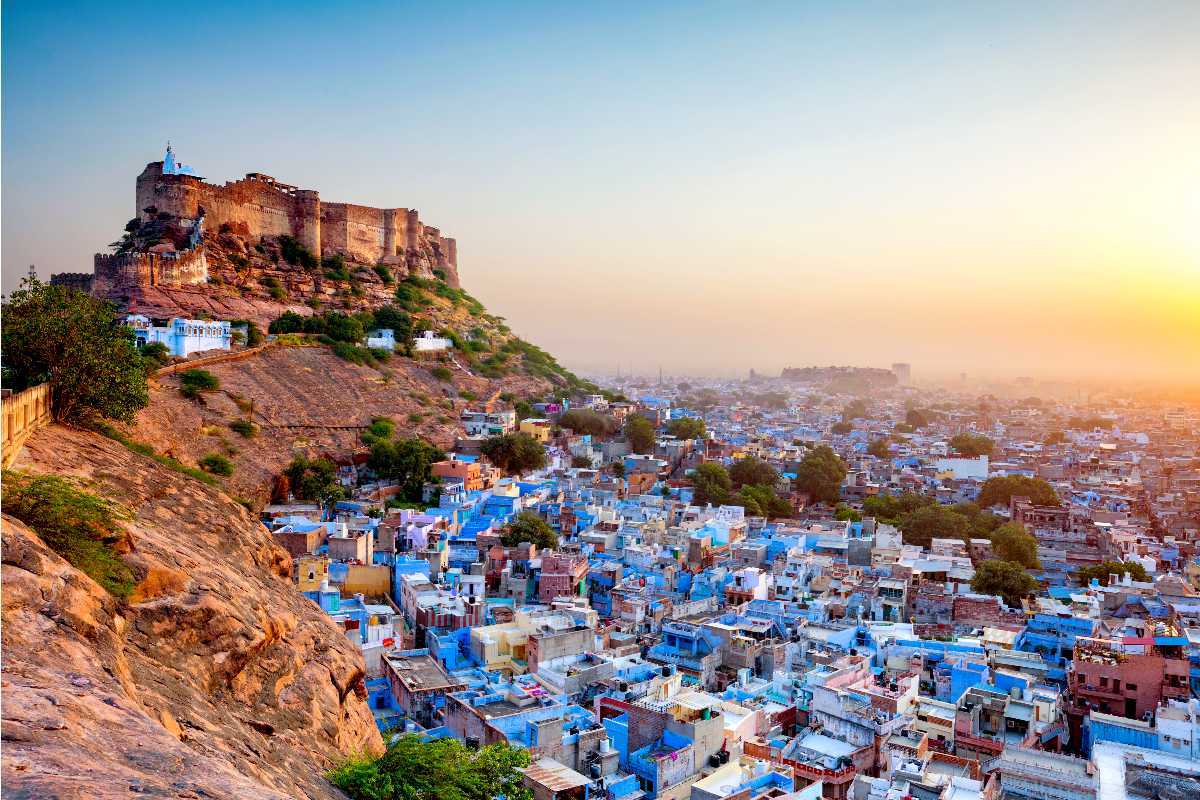
Menu


We will call you back to discuss your requirements.

Jodhpur, the second-largest city in the state of Rajasthan, India, has a fascinating history that spans several centuries. Situated on the eastern edge of the Thar Desert, Jodhpur has been a prominent center of trade, culture, and power since its inception. Let’s delve into the detailed history of Jodhpur, highlighting its origins, rulers, architecture, and cultural significance.
The foundation of Jodhpur can be traced back to the 15th century when it was established by Rao Jodha, a Rathore Rajput chief. Rao Jodha belonged to the prestigious Rathore clan, which claimed descent from Lord Rama. Seeking a secure location for their capital, Rao Jodha chose the rocky terrain of the region known as Marwar, meaning “Land of the Dead” due to its harsh conditions.
Jodhpur derived its name from its founder, Rao Jodha. The city was initially known as “Mandore,” which served as the capital of the Rathore kingdom until Jodhpur was established. Rao Jodha laid the foundation of Mehrangarh Fort in 1459 AD atop a hill overlooking the city. The fort’s construction was completed by subsequent generations of rulers and stands as a magnificent symbol of Rajput architecture and power. Jodhpur derived its name from its founder, Rao Jodha. The city was initially known as “Mandore,” which served as the capital of the Rathore kingdom until Jodhpur was established. In 1459 AD, Rao Jodha laid the foundation of Mehrangarh Fort atop a hill overlooking the city. The construction of the fort continued under subsequent generations of rulers, making it one of the most magnificent fortresses in Rajasthan.
Under the reign of Rao Jodha and his successors, Jodhpur flourished as a prosperous kingdom. The Rathore rulers expanded their territory, establishing control over nearby regions and strengthening their military might. They maintained friendly relations with the Mughal Empire and played a significant role in defending North India from external invasions. The Marwar region, with Jodhpur as its capital, became known for its skilled warriors, exquisite art, and rich cultural heritage. The Rathore rulers patronized artists, musicians, and scholars, fostering a vibrant cultural environment. The city’s bazaars bustled with trade, attracting merchants from distant lands and facilitating the exchange of goods and ideas.
Mehrangarh Fort, with its towering walls and intricate palaces, became the centerpiece of Jodhpur’s architectural landscape. The fort, perched atop a 125-meter high hill, offers breathtaking panoramic views of the city. It houses several splendid structures, including the Moti Mahal (Pearl Palace), Phool Mahal (Flower Palace), and Sheesh Mahal (Mirror Palace). Each palace exhibits a unique blend of Rajput and Mughal architectural styles, adorned with exquisite carvings, frescoes, and decorative elements.
Jodhpur’s prosperity and influence continued to grow during the 18th and 19th centuries under the rule of Maharaja Umaid Singh. He undertook various development projects, including the construction of the grand Umaid Bhawan Palace. Completed in 1943, this magnificent palace stands as a symbol of architectural brilliance, blending elements of Indo-Saracenic and Art Deco styles. Today, Umaid Bhawan Palace serves as a luxurious heritage hotel and a museum that showcases Jodhpur’s history and culture. Jodhpur witnessed significant changes during British colonial rule in India. The kingdom of Jodhpur entered into a subsidiary alliance with the British East India Company, which provided protection to the state in exchange for internal autonomy. Jodhpur actively participated in the struggle for Indian independence, and after India gained independence in 1947, Jodhpur became part of the newly formed state of Rajasthan. Today, Jodhpur stands as a vibrant city that beautifully blends its historical legacy with modern developments. The city’s architectural marvels, including Mehrangarh Fort and Umaid Bhawan Palace, attract tourists from around the world. Visitors can explore the fascinating museum inside Mehrangarh Fort, which showcases an impressive collection of artifacts, weaponry, costumes, and artwork from Jodhpur’s rich past.
The bustling old bazaars of Jodhpur, such as Sardar Market and Clock Tower, offer a glimpse into the city’s rich cultural heritage and vibrant traditions. These markets are a treasure trove of textiles, handicrafts, jewelry, and spices. The colorful and bustling atmosphere immerses visitors in the essence of Rajasthani culture. Jodhpur is also known for its vibrant festivals, such as the Marwar Festival and the Nagaur Fair. These celebrations showcase traditional folk music, dance performances, camel races, and showcase the rich traditions of the region. The Kalbeliya dance, a captivating folk dance performed by the Kalbeliya community, is a visual delight that leaves spectators spellbound.
Jodhpur’s traditional crafts, such as handcrafted textiles, leatherwork, and jewelry, continue to thrive. The city is renowned for its Bandhani (tie-and-dye) and Block Printing techniques, which produce intricate patterns and vibrant colors on fabrics.

jodhpur

Government handicrafts shopping complex dudh Talia Road Udaipur Rajasthan
9376082323
9649084899
9462900001